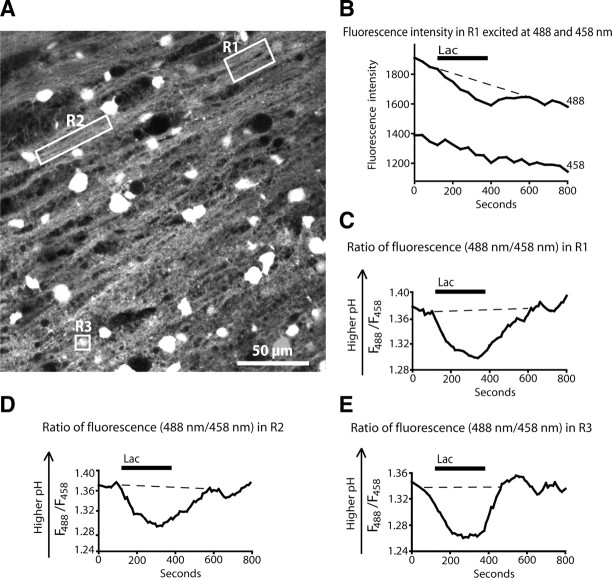Figure 1.
Lactate uptake in corpus callosum generates an intracellular pH change. Cell bodies and processes aligned with axons, which are presumed to be oligodendrocyte processes, in corpus callosum loaded with BCECF-AM, respond to lactate with a reduction in fluorescence intensity excited at 488 nm, but no change in fluorescence excited at 458 nm, indicating acidification. A, Confocal image from corpus callosum showing the regions measured in B–E. R1 and R2 are processes aligned with axons, whereas R3 is a cell body (this soma was chosen to have a fluorescence level that does not saturate the detector). B, The fluorescence response to 10 mm lactate in region R1 at excitation wavelengths 488 and 458 nm. C, The fluorescence response (F) to lactate in region R1 shown as the ratio F488/F458. D, The fluorescence response to lactate in region R2 (F488/F458). E, The fluorescence response to lactate in region R3 (F488/F458).

